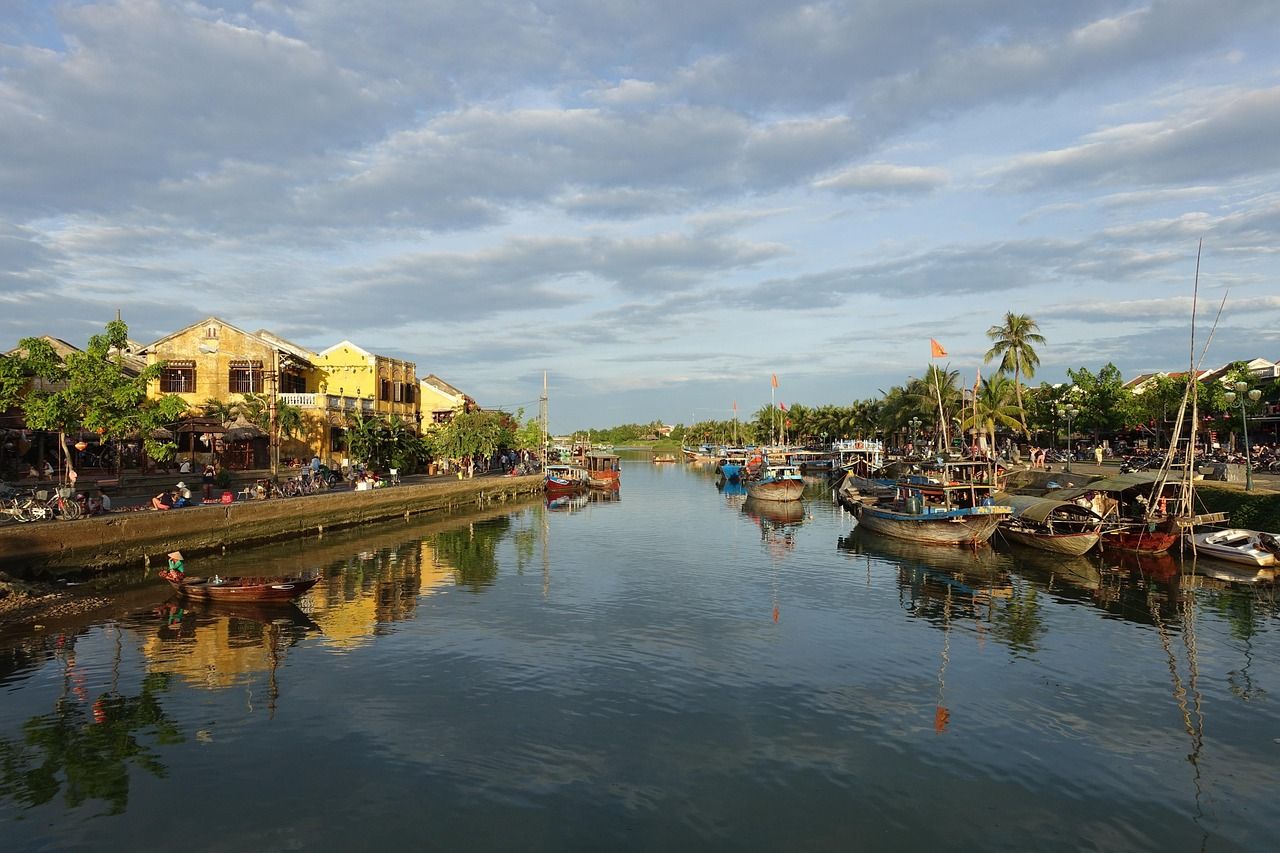


Introduction to Da Nang
Da Nang is located along the coast of Vietnam at the mouth of Hàn River, making it one of Vietnam’s most important port cities. It lies on National Route 1 and North–South Railway, serving as a transport hub in Central Vietnam. Da Nang has been designated as a first class city with higher urbanization ratio than any other Vietnamese province or centrally controlled city.
Key Attractions and Points of Interest
One of the most significant landmarks in Da Nang is Ba Na Hills, featuring its namesake cable car system that takes visitors 128 meters above the ground to enjoy stunning views from a variety of restaurants and cafes. Another attraction includes Marble Mountain, which offers insights into Vietnam’ history through Buddhist temples situated on stone quarries. Visitors can also explore nearby UNESCO World Heritage Sites such as Imperial City in Huế or Old Town Hội An within 100 km (62 mi).
Cultural and Historical Context
Da Nang boasts a rich cultural heritage, showcasing local customs through festivals like Quê Kấnh Ngõ Pon, where tourists can witness traditional Vietnamese performances. The city also has historical significance due to its role during French colonial rule when it was known as Tourane. Visitors should be mindful of their actions and respect the locals while engaging with local culture.
Practical Information for Visitors
Da Nang is accessible year-round, offering visitors a chance to witness vibrant weather patterns that change throughout Vietnam’s seasons. Navigating Da Nang can be done easily by following these tips: tourists should carry small amounts of Vietnamese Dong (VND) as it helps with local transactions; they should also respect the locals by abiding by their customs, including wearing appropriate attire in public places and understanding acceptable behaviors during festivals.
Conclusion: Why Da Nang is Worth a Visit
Da Nang’s appeal lies primarily in its blend of historical significance, cultural depth, and natural beauty. Visitors can witness Vietnam’s history through Buddhist temples situated on stone quarries while enjoying stunning views from Ba Na Hills cable car system. The city offers insights into French colonial rule with festivals like Quête Kẻnh Ngõ Pon, where tourists can witness traditional Vietnamese performances. Da Nang is a compelling travel destination due to its blend of cultural heritage and natural attractions such as UNESCO World Heritage Sites within 100 km (62 mi).
Source: Da Nang Wikipedia
🇰🇷 한국어 보기 (View in Korean)
Da Nang 소개
Da Nang은 Hàn River 입구의 베트남 해안을 따라 위치하여 베트남에서 가장 중요한 항구 도시 중 하나입니다. 국립 루트 1과 남북 철도에 있으며 베트남 중부의 교통 허브 역할을합니다. Da Nang은 다른 베트남 지방이나 중앙 통제 도시보다 도시화 비율이 높은 일류 도시로 지정되었습니다.
주요 명소 및 관심 지점
Da Nang에서 가장 중요한 랜드 마크 중 하나는 Ba Na Hills로, 다양한 레스토랑과 카페에서 멋진 전망을 즐기기 위해 지상에서 128 미터 위로 방문하는 케이블카 시스템을 특징으로합니다. 또 다른 매력에는 석조 채석장에 위치한 불교 사원을 통해 베트남의 역사에 대한 통찰력을 제공하는 Marble Mountain이 포함됩니다. 방문객들은 또한 Huế의 Imperial City 또는 Old Town Hội AN 100km (62 mi)와 같은 인근 유네스코 세계 문화 유산을 탐험 할 수 있습니다.
문화 및 역사적 맥락
Da Nang은 풍부한 문화 유산을 자랑하며, 관광객들이 전통적인 베트남 공연을 목격 할 수있는 Quê Kấnh Ngõ Pon과 같은 축제를 통해 현지 관습을 선보입니다. 이 도시는 또한 투어 레인으로 알려진 프랑스 식민지 통치에서 역할로 인해 역사적으로 중요합니다. 방문객들은 자신의 행동을 염두에두고 현지 문화에 참여하면서 현지인들을 존중해야합니다.
방문자를위한 실용 정보
Da Nang은 일년 내내 접근 할 수 있으며, 방문객들은 베트남의 계절 내내 변화하는 생생한 날씨 패턴을 목격 할 수있는 기회를 제공합니다. Da Nang을 탐색하면 다음 팁을 따라 Da Nang을 쉽게 수행 할 수 있습니다. 관광객은 현지 거래에 도움이되므로 소량의 베트남 동 (VND)을 가지고 있어야합니다. 또한 공공 장소에서 적절한 복장을 착용하고 축제 중에 수용 가능한 행동을 이해하는 등 현지인들을 관습을 준수함으로써 현지인들을 존중해야합니다.
결론 : Da Nang이 방문 할 가치가있는 이유
Da Nang의 매력은 주로 역사적 중요성, 문화적 깊이 및 자연의 아름다움의 조화에 있습니다. 방문객들은 석재 채석장에 위치한 불교 사원을 통해 베트남의 역사를 목격하면서 Ba Na Hills 케이블카 시스템의 멋진 전망을 즐기고 있습니다. 이 도시는 관광객들이 전통적인 베트남 공연을 목격 할 수있는 Quête Kẻnh Ngõ Pon과 같은 축제를 통해 프랑스 식민지 규칙에 대한 통찰력을 제공합니다. Da Nang은 100km (62mi) 이내의 유네스코 세계 문화 유산과 같은 문화 유산과 자연스러운 관광 명소가 조화를 이루기 때문에 매력적인 여행 목적지입니다.

답글 남기기